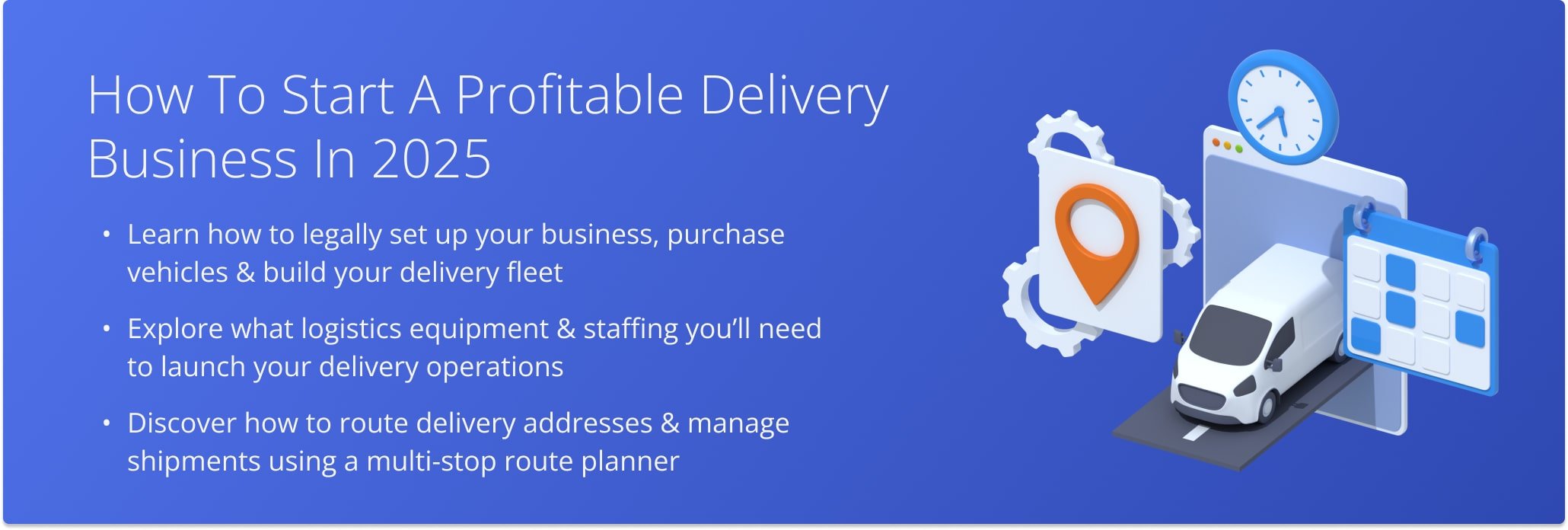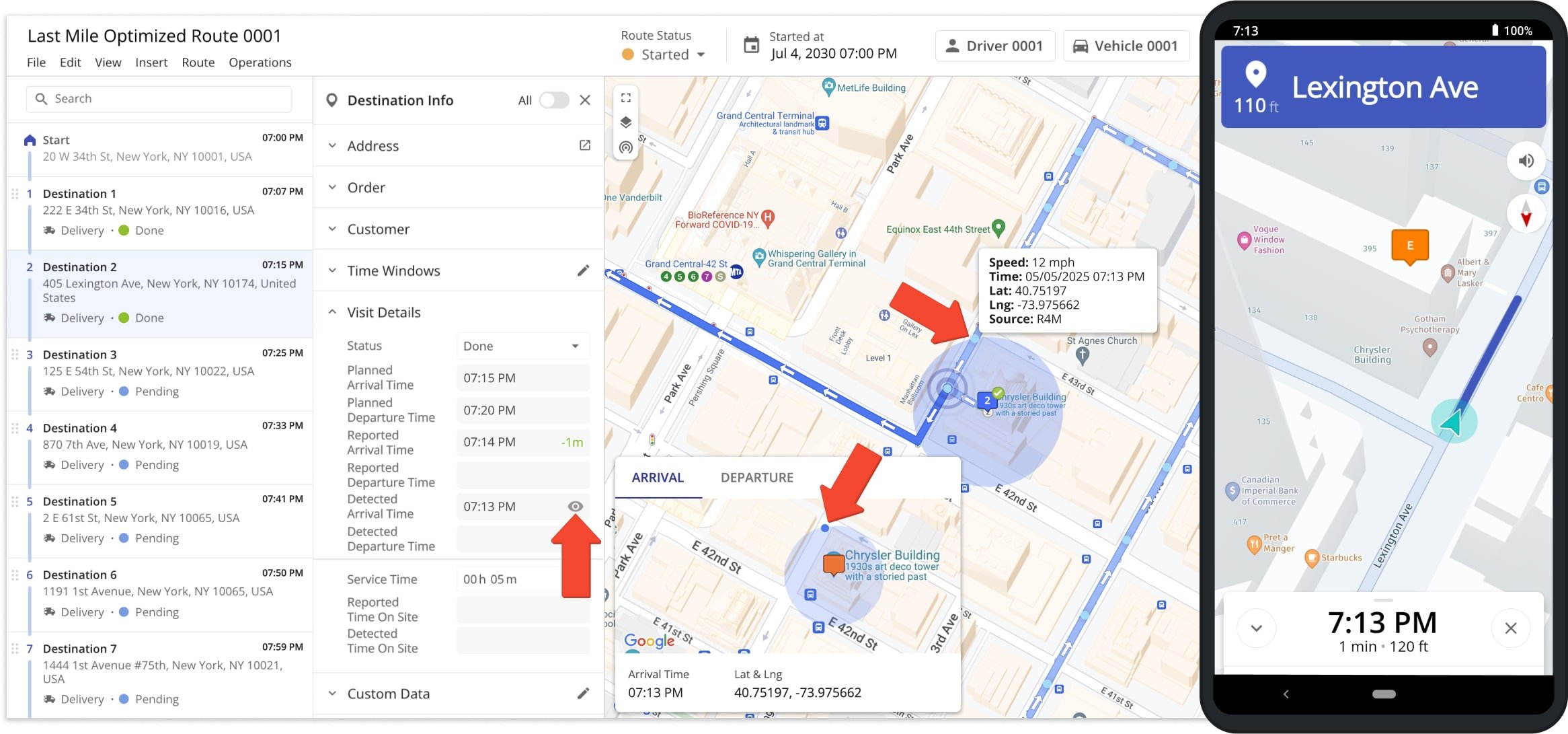How To Start A Profitable Delivery Business In 2025
Starting a delivery business in 2025 is a smart move, with eCommerce and last mile logistics continuing to grow. From shipping online orders to offering same-day delivery, small courier services have more opportunities than ever. While major players like Amazon and FedEx dominate the market, local delivery businesses can thrive with fast service and strong community presence. With the right fleet, drivers, and route optimization tools like Route4Me, you can launch quickly and scale efficiently. This guide walks you through everything you need to know to launch your own delivery business.
Table of Contents
How Do I Deliver My Product?
Delivering products yourself can often be more profitable than outsourcing to third-party courier services. While there’s an upfront investment, the payoff can be higher margins and more control over customer experience.
If you already own vehicles, you can repurpose them as delivery cars and get started with just drivers and a multi-stop route planner. A reliable business delivery routing software solution will help you:
- Set vehicle carrying and loading capacity parameters for full fleet utilization.
- Plan and optimize multiple stops routes to reach more addresses with fewer resources.
- Track delivery drivers in near real time to reduce idling and inefficiencies.
How Can I Ship My Product Cheap?
Cutting costs is critical for any delivery business. A multi-stop route planner can help you ship more efficiently, but you should also analyze routing data to uncover savings:
- Driver performance: Identify underperforming drivers, motivate them with incentives, and reduce costly overtime.
- Fleet maintenance: Use routing analytics to track mileage and schedule preventive maintenance before repairs become expensive.
- Product returns: Mix drop-off and pickup routes for efficiency and implement a reverse logistics plan.
Other cost-saving ideas include using lighter packaging, such as envelopes for small items, to reduce fuel costs and maximize vehicle space.
The Real Costs Of Last Mile Delivery
Have you ever wondered what makes shipping so expensive?
Last mile delivery is the most expensive part of logistics because it involves multiple drivers, vehicles, and frequent customer stops. Labor costs, planning errors, and missed time windows can quickly eat into profits.
Some delivery businesses offset costs by offering “free” shipping only after a minimum order threshold and embedding delivery expenses into product pricing. The key is balancing customer expectations with sustainable margins.
How Do Delivery Businesses Get Customers?
Building a customer base is one of the biggest challenges when starting a delivery business. To get noticed:
- Create a strong social media presence and network with local businesses.
- Invest in online ads targeting nearby customers.
- Use branded uniforms and vehicle wraps to boost visibility.
- Try direct mail campaigns to reach your community.
The goal is to make your delivery business stand out, highlight your strengths, and communicate why customers should choose you over competitors.
How To Start A Delivery Business in 6 Steps
Once you’ve planned your finances and marketing, it’s time to launch your delivery business. Here’s a proven six-step process:
1. Figure Out the Legal Setup
Decide on the right legal structure for your delivery business (LLC, sole proprietorship, etc.). Consult an accountant or attorney to save time and avoid costly mistakes.
2. Build A Fleet Of Delivery Cars
Choose mixed fleet vehicles based on the products you’ll deliver: smaller cars for parcels, larger vans or trucks for furniture and bulky items. Decide whether to but new or used, and consider fuel efficiency and carrying capacity.
3. Get Insurance for Your New Delivery Fleet
Fleet insurance can cover multiple vehicles under one policy, protecting you from accidents, theft, and other risks. Choose coverage levels that balance cost with protection.
4. Purchase Logistics Equipment
Depending on your delivery operation, you may need equipment like forklifts, dollies, ramps, or labeling machines to keep packages moving safely and efficiently.
5. Hire Delivery Drivers (Optional)
You can start solo or hire drivers from day one. Look for candidates with clean driving records, good customer service, and reliability, qualities that reflect well on your delivery business.
6. Route Packages And Start Delivering
Map customer addresses, optimize routes with Route4Me’s multi-stop planner, and dispatch routes directly to drivers’ smartphones. Drivers can use voice GPS navigation, collect proof of delivery, and update progress in real time – all while you track their live progress from your Route4Me account.
Last Updated:

